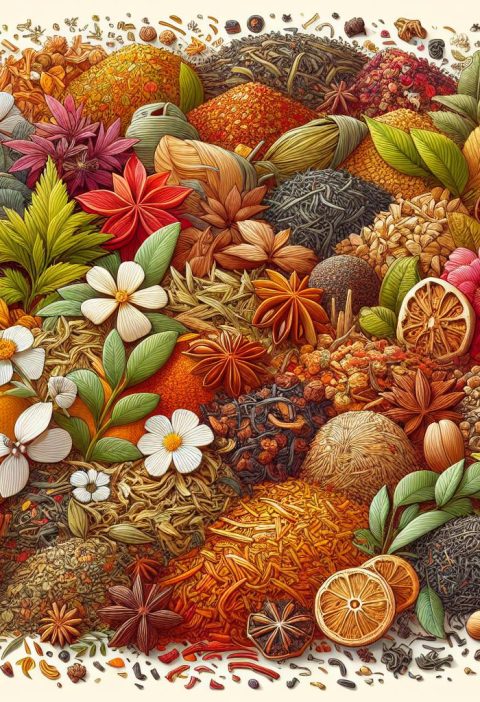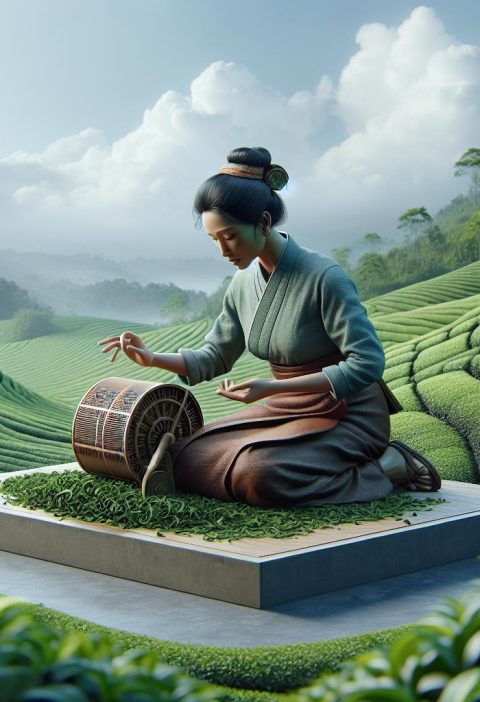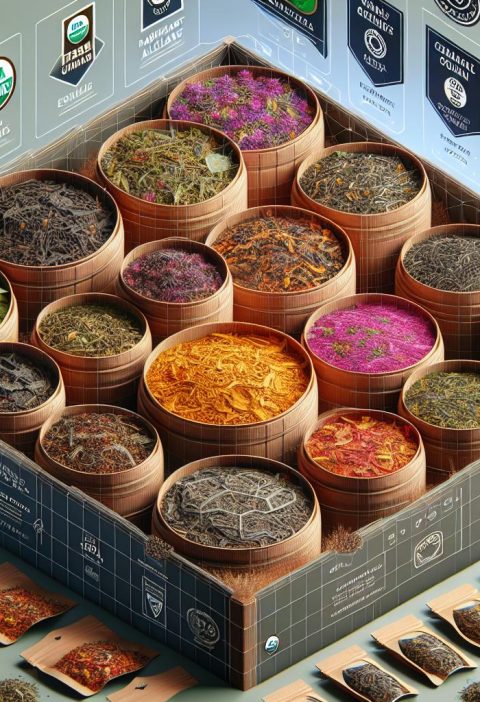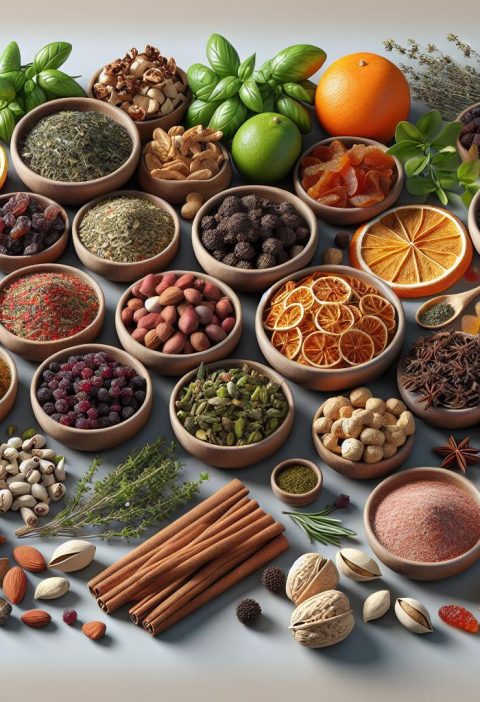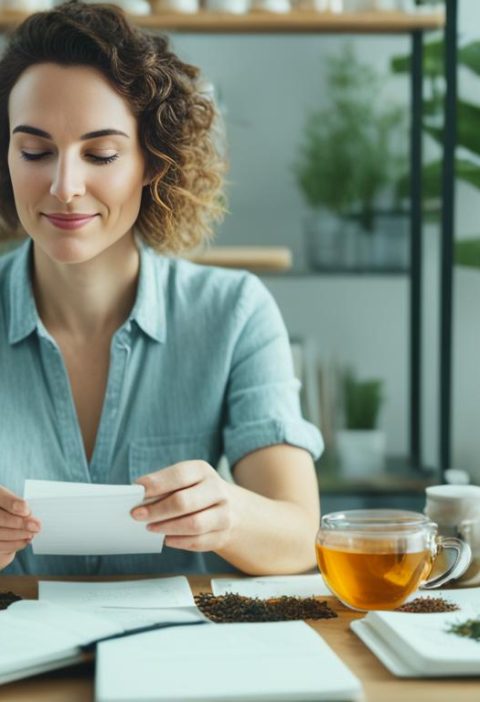So, we’re diving into the wonderful world of DIY tea blends for relaxation. Picture this: a cozy evening, a warm cup of tea in hand, and a custom blend crafted just for you. With a few simple ingredients and a dash of creativity, we can create teas that soothe the soul and calm the mind. Whether you’re looking to unwind after a long day or simply seeking a moment of tranquility, our DIY tea blends are here to elevate your self-care routine.
Let’s explore the art of blending herbs, flowers, and spices to curate teas that cater to our unique relaxation needs. From calming chamomile to invigorating peppermint, the possibilities are endless. Join us on this aromatic journey as we blend, sip, and discover the therapeutic benefits of crafting our own tea blends. Get ready to transform your tea-drinking experience into a ritual of relaxation and rejuvenation.
Selecting the Right Ingredients
When it comes to crafting your own DIY tea blends for relaxation, choosing the right ingredients can make all the difference in the final flavor and therapeutic benefits of your tea. Whether you’re a novice or a seasoned tea enthusiast, selecting the perfect components is key to creating a blend that caters to your specific relaxation needs.
For Beginners: Building the Foundation
- Start with common herbs like chamomile, lavender, or peppermint for a gentle introduction to blending.
- Experiment with dried fruits such as lemon peel or orange zest to add sweetness and a hint of citrus to your blends.
- Consider classic tea bases like green tea or black tea as a familiar starting point for your custom creations.
For Intermediate Blenders: Exploring New Flavors
- Venture into the world of spices like cinnamon, ginger, or cardamom to add warmth and complexity to your blends.
- Incorporate herbal infusions such as lemongrass or hibiscus for a burst of flavor and vibrant color in your teas.
- Source quality ingredients like organic tea leaves and wildflower honey to elevate the taste and health benefits of your blends.
- Dive into rare botanicals like ashwagandha, moringa, or turmeric for unique flavor profiles and potential health-enhancing properties.
- Blend loose-leaf teas with dehydrated flower petals like rose, jasmine, or chrysanthemum for a sensory experience that transcends taste.
- Experiment with aromatic oils such as bergamot or vanilla to add a touch of sophistication and depth to your custom tea blends.
Crafting the perfect DIY tea blend is a delightful journey of exploration and self-discovery. By carefully selecting ingredients that resonate with your tastes and relaxation goals, you can create a personalized tea experience that nourishes both body and soul.
Understanding the Benefits of Different Herbs and Spices

For Beginners: Exploring Common and Easy-to-Find Ingredients
- Start with chamomile and peppermint for a soothing blend.
- Lavender and lemon balm are great options for relaxation.
- Consider cinnamon and ginger for a touch of warmth in your tea.
For Intermediate Blenders: Diving Into Exotic Flavors and Aromas
- Experiment with holy basil for a unique twist.
- Incorporate cardamom and star anise for depth of flavor.
- Licorice root and lemongrass can add complexity to your blends.
- Try ashwagandha for its adaptogenic properties.
- Infuse your blends with turmeric for its anti-inflammatory benefits.
- Schisandra berries and ginseng can add a boost of energy and vitality to your teas.
Our journey into the world of DIY tea blends is about embracing creativity and exploration. By understanding the diverse benefits of various herbs and spices, we can craft personalized blends that cater to our unique relaxation needs. Let’s continue our experimentation and self-discovery to create teas that nourish both body and soul.
Exploring Aromatic Combinations for Relaxation
When it comes to crafting DIY tea blends for relaxation, the art lies in balancing aromatic combinations that soothe and calm the senses. Whether you are just starting or consider yourself an intermediate blender, there are diverse ingredients to explore for creating the perfect cup of relaxation.
For Beginners: Mastering the Basics:
- Start with chamomile for a gentle and calming base.
- Add a touch of peppermint for a refreshing twist.
- Consider lavender for its floral and soothing notes.
- Experiment with lemon balm for a citrusy flavor.
- Spice it up with cinnamon or ginger for added warmth.
For Intermediate Blenders: Enhancing Your Blend:
- Dive into exotic flavors like holy basil for a unique profile.
- Explore the aromatic richness of cardamom or star anise.
- Incorporate licorice root for a touch of sweetness.
- Infuse depth with lemongrass or ashwagandha.
- Harness the benefits of turmeric, schisandra berries, or ginseng for added complexity and health benefits.
- Blend multiple herbs for a harmonious flavor profile.
- Experiment with ratio adjustments to fine-tune your blend.
- Incorporate layering techniques for a nuanced taste experience.
- Consider tea pairing to enhance the overall sensory journey.
- Infuse creativity by adding unexpected elements like floral petals or spices.
Crafting DIY tea blends for relaxation is an empowering journey of self-discovery and creativity. By exploring a variety of aromatic combinations, we can tailor our teas to meet our unique relaxation needs, nurturing both the body and soul through the soothing ritual of tea-making.
Blending and Brewing Techniques
For Beginners: Mastering the Basics
- Start with loose leaf tea: It offers better quality and flavor.
- Measure your ingredients: Use about one teaspoon of tea leaves per cup of water.
- Use filtered water: It can enhance the taste of your tea.
- Select the right temperature: Different teas require different temperatures for brewing.
- Steep for the recommended time: Over-brewing can result in bitterness.
For Intermediate Blenders: Enhancing Your Blend
- Experiment with different tea types: Try black, green, white, oolong, and herbal teas.
- Add complementary flavors: Include fruits, spices, or herbs for complexity.
- Layer your ingredients: Start with the base flavors and build up from there.
- Consider health benefits: Incorporate ingredients known for their soothing properties.
- Personalize your blends: Adjust ratios to suit your taste preferences.
- Explore tea pairing: Match teas with food for a sensory experience.
- Blend multiple tea types: Combine different teas for unique flavor combinations.
- Aromatherapy infusion: Add essential oils for added relaxation benefits.
- Create signature blends: Develop recipes that reflect your style and taste.
- Experiment with cold brewing: Try steeping tea in cold water for a refreshing twist.
| Tea Blending Tips Summary |
|---|
| Beginners |
| Intermediate Blenders |
| Experts |
Personalizing Your DIY Tea Blend

For Beginners: Getting Started with Flavor Profiles
- We recommend starting by familiarizing yourself with basic tea types, such as black, green, white, and herbal teas.
- Begin experimenting with adding dried fruits like citrus peels or berries for a touch of sweetness.
- Consider incorporating spices like cinnamon or ginger for a warming sensation in your blend.
- Don’t forget to keep track of the ratios of each ingredient you use to understand how they affect the overall taste.
- Start small and adjust the flavors based on your preferences.
For Intermediate Blenders: Layering and Enhancing Complexity
- Experiment with blending multiple tea types, such as combining green tea with herbal chamomile for a calming effect.
- Try layering flavors by adding ingredients in different stages of the blending process for a nuanced taste.
- Consider the health benefits of your ingredients; for example, adding mint for digestion or lavender for relaxation.
- Personalize your blend further by exploring aromatherapy infusion with ingredients like lemongrass or jasmine.
- Keep a journal of your blends and recipes to replicate successful combinations.
- Dive into the world of tea pairing by matching your blend with specific foods or desserts to create a harmonious experience.
- Develop signature blends by combining unique ingredients like hibiscus flowers or vanilla bean for a distinctive flavor profile.
- Experiment with cold brewing your tea blends for a refreshing twist, perfect for hot summer days.
- Push boundaries by exploring unconventional ingredients like lavender, saffron, or cardamom for exotic undertones.
- Share your knowledge and blends with others to inspire creativity in the tea blending community.
Remember, the beauty of creating DIY tea blends lies in the opportunity to unleash your creativity and craft a personalized tea experience that suits your unique preferences. Let your taste buds guide you on an exciting journey of tea exploration and discovery.
Conclusion
Creating personalized DIY tea blends is a rewarding journey that allows us to tailor our tea experience to our unique preferences. Whether we are beginners just starting or intermediate blenders looking to elevate our blends, the key lies in experimentation and creativity. By exploring different ingredients, ratios, and infusion techniques, we can craft teas that not only taste delicious but also promote relaxation and well-being. From simple fruit and spice blends to complex layered flavors, the possibilities are endless. Embracing the art of tea blending not only enhances our tea-drinking experience but also offers a therapeutic and calming ritual in our daily lives. So, let’s grab our favorite ingredients, mix, steep, and savor the soothing flavors of our very own DIY tea blends.

